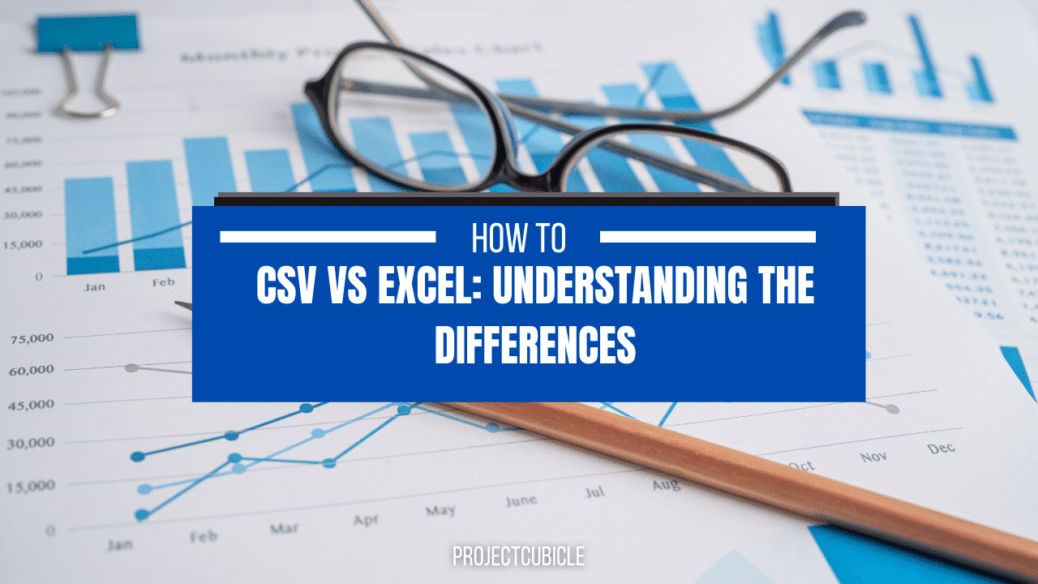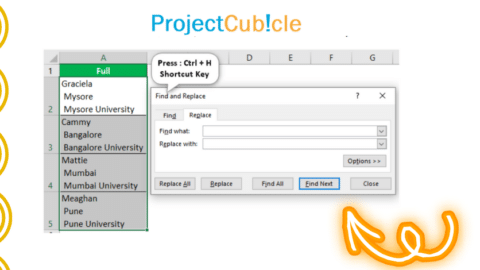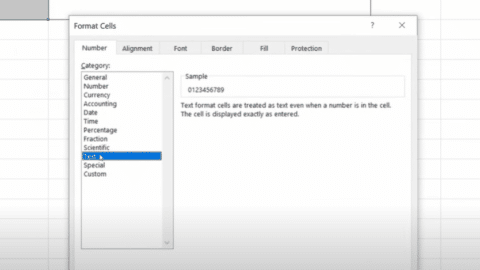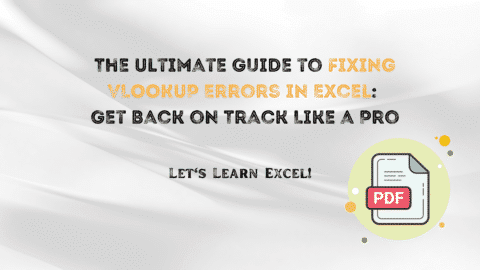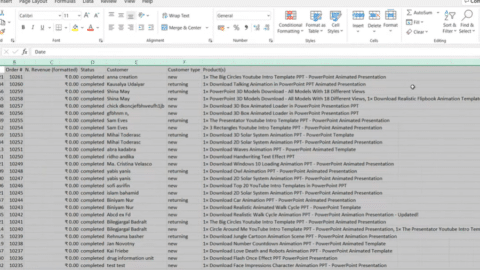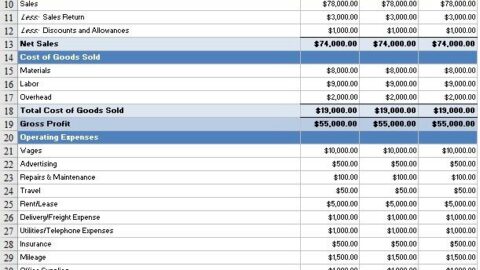CSV vs Excel: Understanding the Differences
When it comes to handling and managing data, businesses and individuals, have a plethora of options to choose from. CSV and Excel are two popular formats widely used for managing and storing data. Both formats have their own advantages and disadvantages, which make them suitable for different use cases. This article will compare CSV in Excel and Excel and help you understand the differences between the two formats.
Table of Contents
Table of Contents
- Introduction
- What is CSV?
- What is Excel?
- CSV vs Excel: Comparison
- Data Handling
- Compatibility
- File Size
- Features
- Data Manipulation
- Speed
- Security
- Which Format to Choose?
- Conclusion
- FAQs
Introduction
CSV and Excel are two file formats that are commonly used for managing and storing data. While both formats serve the same purpose, there are some differences that set them apart. In this article, we will explore the differences between CSV and Excel and help you understand which format is suitable for your needs.
What is CSV?
CSV stands for Comma-Separated Values. As the name suggests, CSV is a file format that separates values using commas. CSV files are plain text files that can be opened using a variety of programs, including Microsoft Excel, Google Sheets, and Apple Numbers.
CSV files contain rows and columns of data, with each row representing a record and each column representing a field. The first row of a CSV file usually contains the column headers, while subsequent rows contain the data.
One of the major advantages of CSV is that it is a lightweight format that can be easily shared and opened on different platforms. Additionally, CSV files can be easily created using a text editor or a spreadsheet program.
CSV vs Excel: Comparison
Now that we have an understanding of what CSV and Excel are, let’s compare the two formats based on several key factors.
Data Handling
CSV and Excel handle data differently. CSV files are plain text files that contain only the data and no formatting or formulas. Excel, on the other hand, is a full-fledged spreadsheet program that allows for complex data manipulation, analysis, and visualization.
While both formats are suitable for managing and storing data, Excel is a more powerful tool for data handling, with features such as data validation, conditional formatting, and pivot tables.
Compatibility
One of the major advantages of CSV is its compatibility. CSV files can be opened using a variety of programs, including Microsoft Excel, Google Sheets, and Apple Numbers. This makes CSV a great format for sharing data across different platforms and operating systems.
Excel, on the other hand, is a proprietary format that can only be opened using Microsoft Excel or a compatible program. This can be a disadvantage if you need to share your data with someone who does not have access to Excel.
File Size
CSV files are plain text files that are much smaller in size compared to Excel files. This is because CSV files do not contain any formatting or formulas, which can make Excel files much larger.
If file size is a concern, CSV is a better option as it takes up less storage space and can be easily shared or uploaded to the cloud.
Features
Excel is a feature-rich program that offers a wide range of tools and functions for data analysis, manipulation, and visualization. Some of the key features of Excel include:
- Conditional formatting: Allows you to format cells based on specific criteria.
- Data validation: Helps ensure that data is entered correctly by setting up rules for data entry.
- Pivot tables: Allows you to summarize and analyze large amounts of data.
- Charts and graphs: Helps you visualize your data and identify trends and patterns.
CSV files, on the other hand, do not offer any of these features. CSV files are plain text files that contain only the data and no formatting or formulas.
Data Manipulation
Excel offers a wide range of tools and functions for data manipulation, including filtering, sorting, and grouping data. Excel also allows you to perform calculations and apply formulas to your data.
CSV files, on the other hand, do not offer any of these features. While you can manipulate data in a CSV file using a text editor or a scripting language, it can be much more time-consuming compared to using Excel.
Speed
When it comes to opening and processing data, CSV files are generally faster compared to Excel files. This is because CSV files are plain text files that are much smaller in size compared to Excel files.
Additionally, CSV files can be easily opened and edited using a text editor or a spreadsheet program, while Excel files can be slower to open and may require more processing power.
Security
Excel files offer more security options compared to CSV files. Excel files can be password-protected and can also be encrypted to protect sensitive data. Also, Excel offers more control over who can access and modify the data.
CSV files, on the other hand, do not offer any security options. CSV files are plain text files that can be easily accessed and modified by anyone who has access to the file.
Which Format to Choose?
Choosing between CSV and Excel depends on your specific needs and use case. If you are working with small to medium-sized data sets and need a lightweight format that can be easily shared and opened on different platforms, CSV is a great option.
Excel is a better option if you need more advanced data manipulation, analysis, and visualization capabilities, or if you are working with larger data sets. Excel offers a wide range of tools and functions for data handling, and its proprietary format allows for greater security and control over your data.
Conclusion
In conclusion, both CSV and Excel are popular file formats for managing and storing data. While CSV is a lightweight format that is easy to share and open on different platforms, Excel is a powerful spreadsheet program that offers a wide range of tools and functions for data manipulation, analysis, and visualization.
Choosing between CSV and Excel depends on your specific needs and use case. By understanding the differences between the two formats, you can choose the one that best fits your requirements. You can read How to Control Charts in Excel: A Comprehensive Guide to learning more about Excel. You can also check the other content.
Hello, I’m Cansu, a professional dedicated to creating Excel tutorials, specifically catering to the needs of B2B professionals. With a passion for data analysis and a deep understanding of Microsoft Excel, I have built a reputation for providing comprehensive and user-friendly tutorials that empower businesses to harness the full potential of this powerful software.
I have always been fascinated by the intricate world of numbers and the ability of Excel to transform raw data into meaningful insights. Throughout my career, I have honed my data manipulation, visualization, and automation skills, enabling me to streamline complex processes and drive efficiency in various industries.
As a B2B specialist, I recognize the unique challenges that professionals face when managing and analyzing large volumes of data. With this understanding, I create tutorials tailored to businesses’ specific needs, offering practical solutions to enhance productivity, improve decision-making, and optimize workflows.
My tutorials cover various topics, including advanced formulas and functions, data modeling, pivot tables, macros, and data visualization techniques. I strive to explain complex concepts in a clear and accessible manner, ensuring that even those with limited Excel experience can grasp the concepts and apply them effectively in their work.
In addition to my tutorial work, I actively engage with the Excel community through workshops, webinars, and online forums. I believe in the power of knowledge sharing and collaborative learning, and I am committed to helping professionals unlock their full potential by mastering Excel.
With a strong track record of success and a growing community of satisfied learners, I continue to expand my repertoire of Excel tutorials, keeping up with the latest advancements and features in the software. I aim to empower businesses with the skills and tools they need to thrive in today’s data-driven world.
Suppose you are a B2B professional looking to enhance your Excel skills or a business seeking to improve data management practices. In that case, I invite you to join me on this journey of exploration and mastery. Let’s unlock the true potential of Excel together!
https://www.linkedin.com/in/cansuaydinim/

